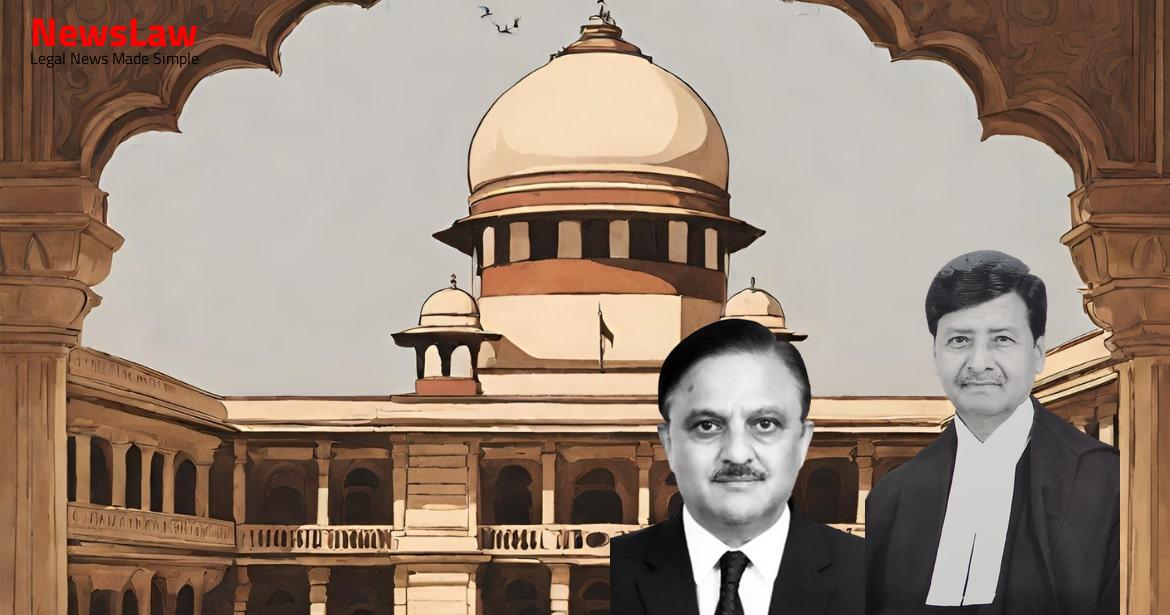In a landmark case concerning the distribution of land, the Supreme Court of India issued a judgment based on a Memo of Compromise between the Sons of Kisan and the Mortgagees. This decision signifies a crucial step towards resolving property disputes through mutual agreement and highlights the significance of following legal processes for fair outcomes. The case sheds light on the complexities of property division and the importance of upholding justice in such matters.
Facts
- The suit land was originally owned by Kisan Punde, father of respondents Vithal, Tukaram, Kachru, and Madan.
- The land was mortgaged to Vasudeorao in 1941 and further mortgaged to Chandu Narsingh Pardeshi in 1942.
- Appellants are the mortgagees of the land admeasuring 29 acres and 4 gunthas, in possession since 1942.
- Chandu, the father of the appellants, had alienated 5 acres of land to respondents Bakru and Sheelabai.
- Sons of Kisan filed a petition for termination of the mortgage and restoration of possession which was allowed ex-parte.
- The order was challenged before the Additional Commissioner and a compromise was reached between the parties regarding the distribution of land.
- The Additional Collector, after considering the evidence, ruled in favor of sons of Kisan for possession of the land.
- The appellants filed a writ petition which was dismissed by the High Court stating that the proceedings initiated by the sons of Kisan were maintainable.
- The High Court affirmed that the mortgagee in possession cannot be termed as a ‘deemed tenant’ under Section 5 of the Hyderabad Tenancy and Agricultural Lands Act, 1950.
- Appellants appealed against this decision.
Also Read: Judgment Review: Supreme Court’s Ruling on the Capital Punishment Appeal
Decision
- The Registry is instructed to draft a decree based on the Memo of Compromise between the parties.
- The terms of Compromise/Memo of allotment of shares (Annexure-A3) and the map/sketch (Annexure-5) showing property division are to be included in the decree.
- Parties are instructed to cooperate in mutation by filing necessary applications with the relevant authority.
- Parties can register the decree with the concerned Sub-Registrar upon compliance with Rules and law.
- The appeal is resolved based on the Memo of Compromise, and mutation should be done accordingly.
- The terms of Compromise (Annexure-A3) and maps/sketches (Annexure- A5) showing property division are integral to this judgment.
Also Read: The Ruias v. MHL: Landmark Supreme Court Judgement
Case Title: DIGAMBER Vs. KACHRU DEAD THR LRS.
Case Number: C.A. No.-004382-004382 / 2014



